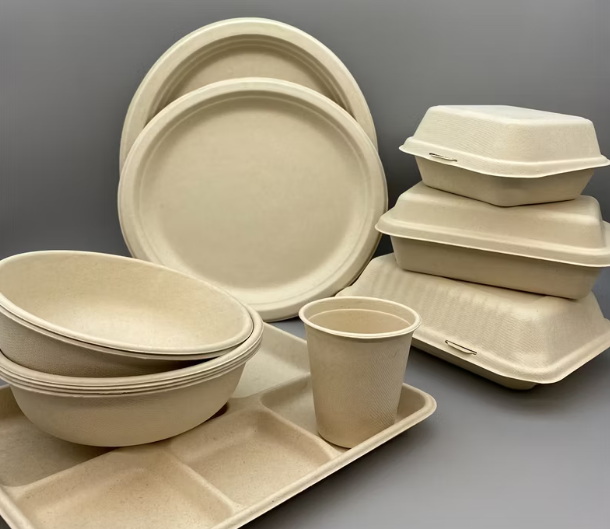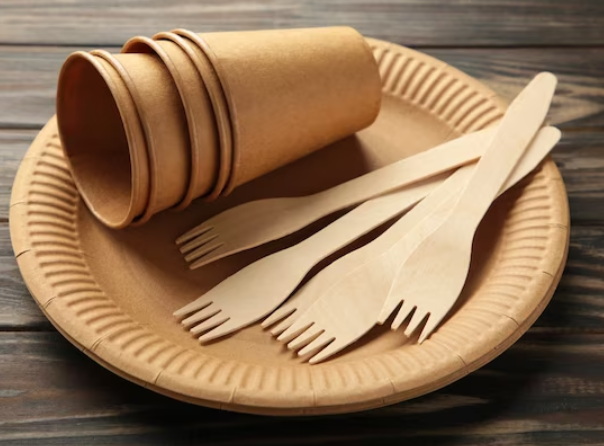
Content Menu
● Introduction to Eco-Friendly Tableware
>> Types of Eco-Friendly Materials
● Benefits of Eco-Friendly Premium Disposable Tableware
>> Environmental Benefits
>> Practical Benefits
● Applications of Eco-Friendly Premium Disposable Tableware
● Innovations in Eco-Friendly Tableware
>> Emerging Trends
● Market Trends and Demand
>> Market Shifts
● The Role of Reusable Tableware
>> Benefits of Reusable Tableware
● Challenges and Opportunities
>> Overcoming Challenges
● Conclusion
● FAQs
>> 1. What materials are commonly used for eco-friendly premium disposable tableware?
>> 2. How long does it take for eco-friendly tableware to decompose?
>> 3. Is eco-friendly premium disposable tableware more expensive than traditional plastic?
>> 4. Can eco-friendly premium disposable tableware be reused?
>> 5. What certifications should I look for when purchasing eco-friendly premium disposable tableware?
● Citations:
In recent years, the demand for eco-friendly products has surged, driven by growing concerns about environmental sustainability. One area where this shift is particularly evident is in the tableware industry, where premium disposable tableware is increasingly sought after for its ability to combine luxury with environmental responsibility. This article explores the concept of eco-friendly premium disposable tableware, its benefits, and the various materials used in its production.

Introduction to Eco-Friendly Tableware
Eco-friendly tableware, including premium disposable options, is crafted from sustainable materials that can naturally decompose without harming the environment. Unlike traditional plastic tableware, which can take hundreds of years to decompose, eco-friendly alternatives break down within months, significantly reducing landfill waste and pollution.
Types of Eco-Friendly Materials
1. Palm Leaf: Made from fallen palm leaves, these plates are durable, compostable, and add a rustic charm to any setting.
2. Sugarcane Bagasse: A byproduct of sugar production, bagasse is biodegradable and compostable, making it an excellent alternative to styrofoam.
3. PLA (Polylactic Acid): Derived from fermented plant starch, PLA is used for compostable utensils and containers.
4. Bamboo: Known for its durability and lightweight nature, bamboo tableware is a popular eco-friendly choice.
5. Algae-Based Bioplastics and Mushroom-Based Materials: These innovative materials are being developed to enhance the sustainability and performance of biodegradable plates[3].
Benefits of Eco-Friendly Premium Disposable Tableware
Environmental Benefits
- Reduced Waste: Biodegradable materials decompose naturally, minimizing landfill waste.
- Lower Carbon Footprint: Production processes often require less energy and emit fewer greenhouse gases compared to traditional plastics.
- Non-Toxic: These products do not release harmful chemicals during decomposition.
Practical Benefits
- Durability: Many eco-friendly materials, like sugarcane bagasse and bamboo, are strong enough to handle heavy foods.
- Style and Aesthetic: Eco-friendly tableware comes in various designs, enhancing the dining experience with its natural beauty.
Applications of Eco-Friendly Premium Disposable Tableware
Eco-friendly premium disposable tableware is versatile and suitable for various occasions:
- Restaurants and Cafes: Offering customers a sustainable dining experience.
- Catering and Events: Ideal for weddings, corporate functions, and eco-conscious parties.
- Household Use: Perfect for family gatherings, BBQs, and picnics.
Innovations in Eco-Friendly Tableware
The future of disposable tableware is becoming increasingly sustainable and innovative. With advancements in biodegradable materials and manufacturing processes, eco-friendly products are not only environmentally responsible but also stylish and functional.
Emerging Trends
- Advanced Materials: Innovations such as algae-based bioplastics and mushroom-based materials are being developed to create more eco-friendly tableware[3].
- Enhanced Durability: Researchers are continually exploring new materials to enhance the performance and sustainability of biodegradable plates[3].
- Modular and Reusable Designs: Eco-friendly tableware is moving toward reusable and modular options, emphasizing durability and long-term use[8].
Market Trends and Demand
The demand for biodegradable tableware is booming, driven by government bans on single-use plastics and consumer preference for sustainable products. This industry is projected to grow significantly, presenting opportunities for entrepreneurs and businesses. The global biodegradable tableware market was valued at USD 15.27 billion in 2023 and is expected to grow at a CAGR of 6.2% from 2024 to 2030[4].
Market Shifts
- Increased Adoption of Biodegradable Materials: The rise of compostable plates made from sugarcane, bamboo, and palm leaves is driving market growth[6].
- Regulatory Support: Government initiatives promoting sustainable packaging further boost market expansion[6].
- Consumer Awareness: Growing consumer awareness about the negative impact of plastic pollution is shifting demand towards sustainable alternatives[4].

The Role of Reusable Tableware
While premium disposable tableware offers convenience, reusable tableware made from materials like bamboo, coconut, and metal provides a sustainable alternative for frequent use. These materials are durable, eco-friendly, and can be customized to meet various needs[2].
Benefits of Reusable Tableware
- Durability: Materials like bamboo and metal are highly durable and can withstand repeated use.
- Eco-Friendly: Reusable tableware reduces the need for single-use plastics, minimizing waste.
- Customization: Options for customization allow businesses and individuals to personalize their tableware, enhancing brand identity and aesthetic appeal[2].
Challenges and Opportunities
Despite the growth in eco-friendly tableware, challenges remain, including the high cost of materials and varied composting infrastructure. However, these challenges also present opportunities for innovation and investment in sustainable technologies.
Overcoming Challenges
- Innovative Materials: Developing new biodegradable materials can improve product performance and reduce costs.
- Infrastructure Development: Investing in composting facilities can enhance the efficiency of biodegradable waste management.
- Regulatory Compliance: Ensuring compliance with environmental regulations can drive market growth and consumer trust[1].
Conclusion
In conclusion, premium disposable tableware can indeed be eco-friendly, offering a luxurious yet sustainable dining experience. By choosing materials like palm leaves, sugarcane bagasse, and bamboo, consumers can reduce their environmental footprint while enjoying the convenience of disposable tableware.

FAQs
1. What materials are commonly used for eco-friendly premium disposable tableware?
Eco-friendly premium disposable tableware is often made from materials such as palm leaves, sugarcane bagasse, PLA (polylactic acid), and bamboo. These materials are biodegradable and compostable, reducing environmental impact.
2. How long does it take for eco-friendly tableware to decompose?
The decomposition time varies depending on the material and conditions. For example, sugarcane bagasse decomposes within 60-90 days in industrial composting facilities, while palm leaves take about 3-4 months.
3. Is eco-friendly premium disposable tableware more expensive than traditional plastic?
Yes, eco-friendly tableware is generally 20-50% more expensive than traditional plastic due to the higher cost of raw materials and production processes. However, it offers long-term environmental benefits and can enhance brand image.
4. Can eco-friendly premium disposable tableware be reused?
While most eco-friendly tableware is designed for single use, some materials like palm leaf plates can be gently washed and reused a few times for dry foods.
5. What certifications should I look for when purchasing eco-friendly premium disposable tableware?
Look for certifications like the Singapore "Green Label", FDA, ISO, and SGS to ensure that the products are safe and meet environmental standards.
Citations:
[1] https://www.futuremarketinsights.com/reports/eco-friendly-paper-plates-market
[2] https://directecogreen.com/food-packaging/eco-reusable-tableware/
[3] https://cosmosecofriends.com/the-future-of-biodegradable-plates-innovations-and-trends/
[4] https://www.grandviewresearch.com/industry-analysis/biodegradable-tableware-market-report
[5] https://www.linkedin.com/pulse/top-benefits-switching-eco-friendly-dinnerware-ecosoulhome-jvr3c
[6] https://www.accessnewswire.com/newsroom/en/industrial-and-manufacturing/disposable-plates-market-to-expand-at-36-cagr-through-2035-driven-by-fo-983798
[7] https://greenpaperproducts.com/blog/the-importance-of-eco-friendly-disposable-tableware-for-food-businesses
[8] https://www.graczinternational.com/the-future-of-eco-friendly-tableware-innovations-in-sustainableproducts/
[9] https://ecoclicky.com/en/biodegradable-tableware-market/
[10] https://www.sunbeauty.com/10-advantages-of-using-eco-friendly-tableware/
[11] https://reads.alibaba.com/smart-choices-in-disposable-dinnerware-amp-tableware-what-to-know/
[12] https://www.bambuhome.com/blogs/bambuliving/compostable-vs-disposable-plates
[13] https://jollychef.com/blogs/news/the-future-of-disposable-tableware-sustainability-innovation-design-trends-for-2025
[14] https://www.cognitivemarketresearch.com/biodegradable-tableware-market-report
[15] https://www.green-sapling.com/blogs/news/the-benefits-of-utilizing-eco-friendly-disposable-tableware-at-parties
[16] https://www.regreenpacking.com/bagasse-disposable-tableware-a-promising-outlook-in-the-global-market-in-2025
[17] https://arbhuenterprises.com/top-10-ecofriendly-tableware-options-for-sustainable-dining/
[18] https://www.hspulpmolding.com/the-future-of-biodegradable-tableware-advances-in-innovative-biodegradable-machines/
[19] https://www.databridgemarketresearch.com/reports/global-biodegradable-disposable-tableware-market
[20] https://ecosoulhome.in/blogs/sustainable-living/5-reasons-why-eco-friendly-disposable-plates-are-money-saving

















